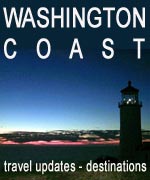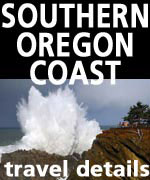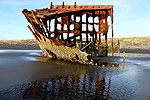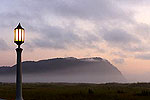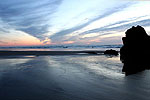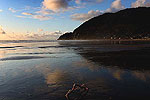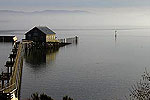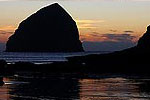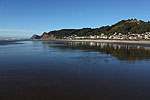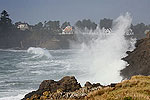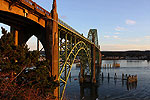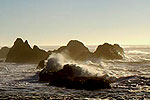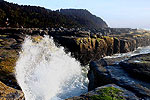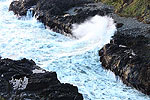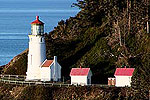Octopus Tree Atop Cape Meares: History, Hikes, Rumors of the Oregon Coast Celeb
Published 4/12/24 at 12:05 a.m.
By Oregon Coast Beach Connection staff
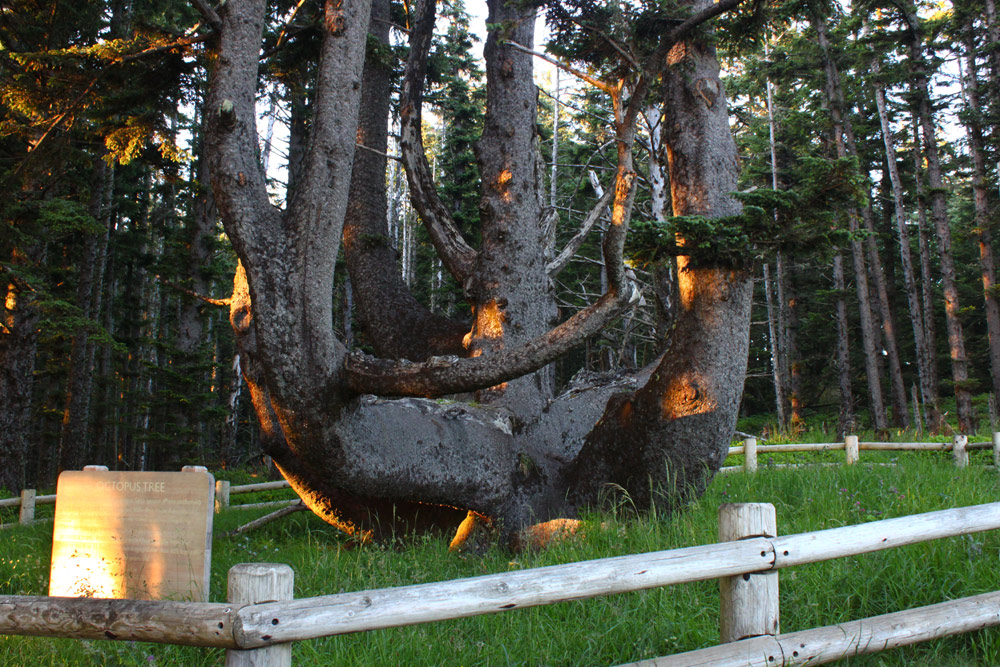
(Oceanside, Oregon) – Whether or not it's the oldest, or tallest or even strangest, whatever titles the Octopus Tree atop Cape Meares has (sort of) acquired, it's at the top of the list of favorites for many. For over 60 years now, this sprawling multi-limbed forest freak has been accessible and it's been the center of attention for scores over that time, providing tiny, nearby Oceanside with an attraction that's amazing and legendary. (All photos Oregon Coast Beach Connection)
Indeed, it had quite the fame for a time.
Cape Meares' Octopus Tree has a distinct and downright odd candelabra shape, consisting of six branches that spread out from what looks to be no base at all. It's almost as if it has no trunk. However, that base is underground: those limbs all meet down at the very bottom of the Octopus Tree. Then, count all the major offshoots of this behemoth: you'll notice there's really like eight or nine different limbs, depending on how you think of it.
The thing is full of mystery. One of those is just how it got to look this way. In spite of whatever you read out in Internet Land, the origin of its shape is still not exactly known. There are numerous theories, however.
The Octopus Tree is several hundred feet from the main viewpoint at Cape Meares and the parking lot. From there, you enter a deep and dense forest. Even in '63, travel writers said it was a place where sunlight barely penetrated. That's still the case, as you can see by the photos of the Octopus Tree over some 20 years that Oregon Coast Beach Connection has documented it.
There, it's fenced off, with an informative sign and another asking you not to climb. Sad that's even needed.
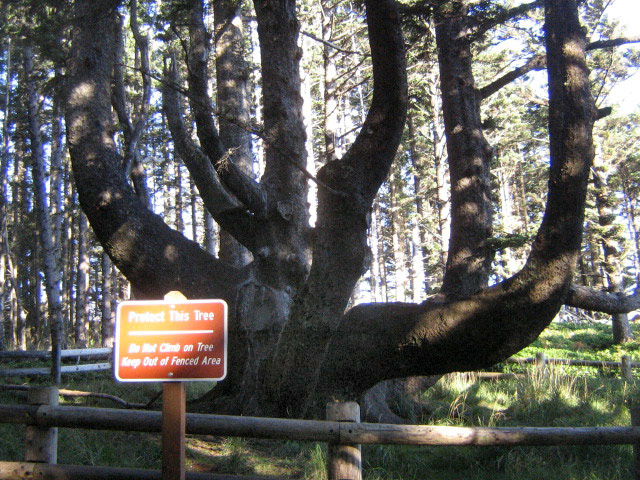
In 2001: look close and you'll see where the missing limb was.
And just how old is the Octopus Tree? That's a puzzle too. For decades, the Octopus Tree was thought to be 400 years old, but in recent years it's been narrowed down to 200 to 300 years old.
Rumors about the unique tree abound, but the frequently-heard tale that is true is that one of the limbs was torn off during a heavy windstorm in the '90s. You can see the spot where something is clearly missing. There were until then seven large limbs extending from it, which was well documented in the 1960s when the tree was featured in the Ripley's Believe It Or Not books – which were a hip, cool trivia thing long before the internet. They called it “seven trees in one.”
Which brings us to the name – why it's called the Octopus Tree. Who gave it that moniker isn't clear, though it seems it had it long before 1963. It's about that year when the park opened and the first newspaper articles appear that mention the Octopus Tree, shortly after the Three Capes Loop was built (now known as the Three Capes Scenic Route, among other things). Likely, earlier residents gave the tree that name because of the unique candelabra-like shape.
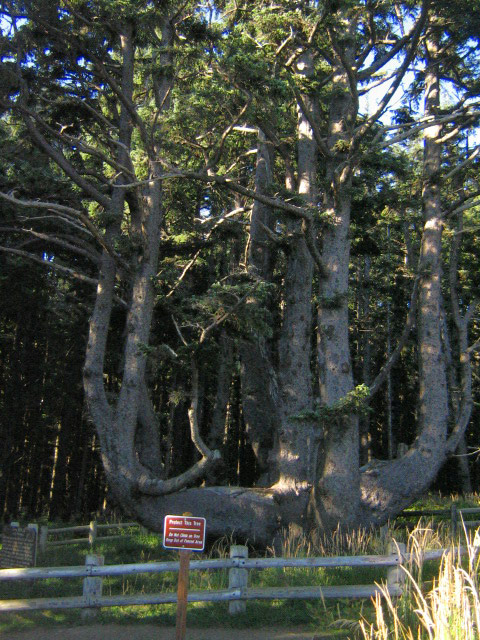
Back in '63 when the state park just opened, the Capital Journal wrote it was a “Sitka spruce of exceptional size, candelabra in its branching and grotesquely formed by strong coastal winds and the sheltered hollow of its location.”
It turns out, that's likely not how it was formed. But more on that in a second.
There are numerous internet rumors that it is the tallest in Oregon. Nope. This was debunked a few times, and it could be that people had the Octopus Tree mixed up with another Sitka Spruce nearby that was under consideration.
A soaring monster of a tree near Cannon Beach was the tallest in the state until late in the 2000s, when a big Oregon coast blowout knocked it over. There are many more trees much higher, including at Yachats and around Brookings and Bend.
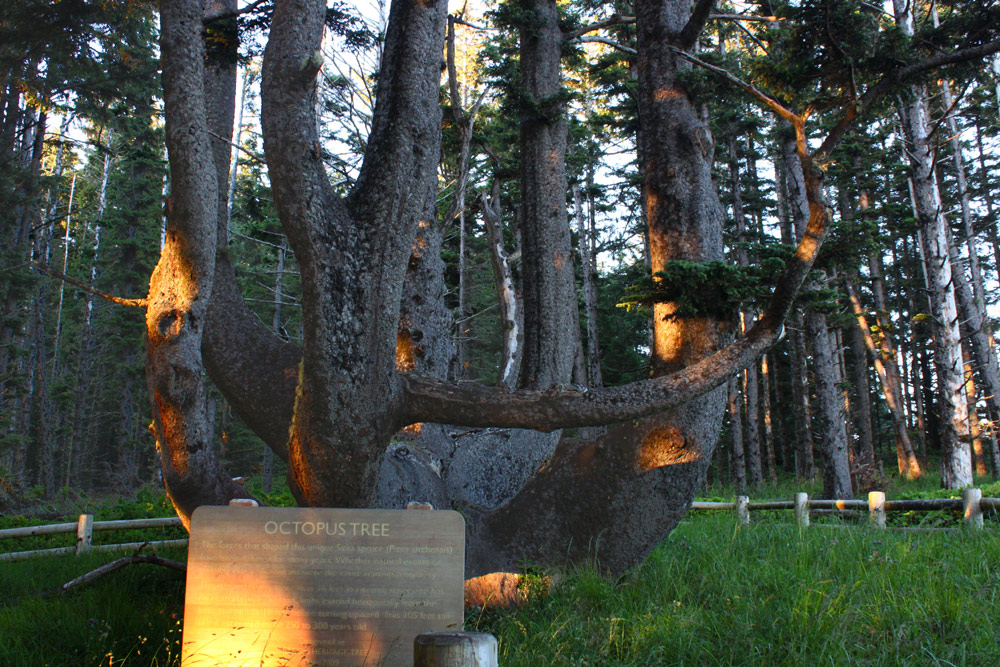
What is the height of the Octopus Tree?
The north Oregon coast's Octopus Tree is a mere 105 feet high. However, it's some 60 feet in circumference, because those limbs stretch out as far as 30 feet away from the center, making it a giant in other ways .
While Ripley's made it a celeb through the mid century, the tree was long revered by local tribes as a ceremonial site, possibly for hundreds of years. There were numerous such native spiritual trees documented by Sam Boardman in the early century – yes, the same man the big scenic corridor on the south Oregon coast is named for.
This is where the big mystery of the Octopus Tree's origin comes in: how did it get this look? A common practice among tribes was to push sacred tree limbs downward while it was still flexible, and they grew outward until they were allowed to grow normally. Then the branches would grow straight upwards. In this case, the Octopus Tree limbs jut out some 16 and then another good 100 feet skyward.
There was also talk tribes would “bury” some of their dead in canoes in between tree limbs, but that's unsubstantiated.
Oregon coast gale winds have been the other theory, though that's less popular now. However, another guess in decades past has been that when the tree was a seedling, it had gotten trampled underfoot now and again, thus getting a different shape.
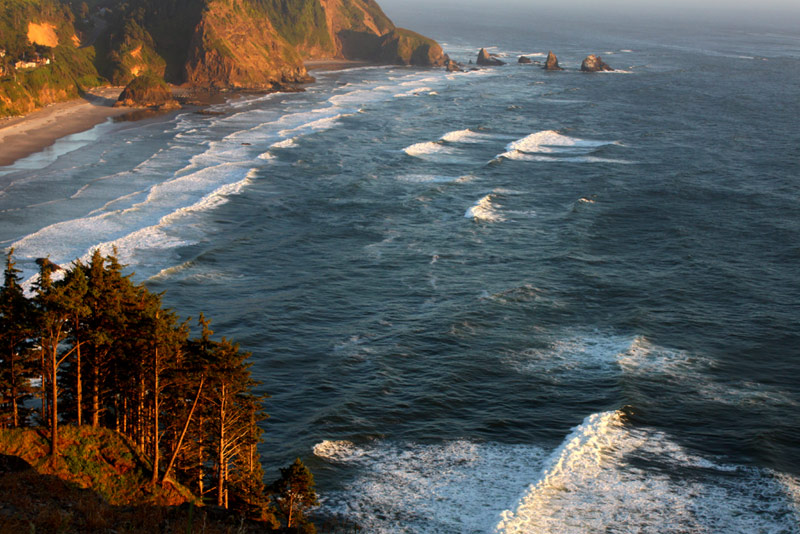
In either case, Cape Meares' Octopus is not to be missed, along with the stunning viewpoint a few steps away. From here you get a nice glimpse into Lost Boy Beach, the absolutely hidden and dangerous beach between Short Beach and Oceanside's Tunnel Beach (often known as Star Trek Beach).
There are numerous hiking opportunities atop Cape Meares, with the main path between the parking lot and the tree less than 1,000 feet worth of a hike. According to Oregon State Parks: "From a turnoff at the park entrance, a 0.8-mile trail heads north through a forest of old growth spruce that's part of a National Wildlife Refuge. Take the .25-mile spur trail to the largest Sitka spruce tree in Oregon."
Also see Cape Meares Scary Geology
Hotels in Oceanside - Where to eat - Oceanside Maps and Virtual Tours
Cannon Beach Lodging
Nehalem Bay Lodgings
Manzanita Hotels, Lodging
Three Capes Lodging
Pacific City Hotels, Lodging
Lincoln City Lodging
Depoe Bay Lodging
Newport Lodging
Waldport Lodging
Yachats Lodging
Oregon Coast Vacation Rentals
Oregon Coast Lodging Specials
More About Oregon Coast hotels, lodging.....
More About Oregon Coast Restaurants, Dining.....
 Andre' GW Hagestedt is editor, owner and primary photographer / videographer of Oregon Coast Beach Connection, an online publication that sees over 1 million pageviews per month. He is also author of several books about the coast.
Andre' GW Hagestedt is editor, owner and primary photographer / videographer of Oregon Coast Beach Connection, an online publication that sees over 1 million pageviews per month. He is also author of several books about the coast.
LATEST Related Oregon Coast Articles
Old, Familiar Oregon Coast Landmark Tree Falls Off Garibaldi's Three GracesThere for a good 150 years, toppled by a windstorm. Tillamook Bay, Rockaway Beach, Oceanside, Cape Meares
UPDATE: High Winds Take Out At Least 3 Oregon Coast Parks, Surf Warnings Exte...
Shore Acres Lights closed at least one night; Cape Meares, Ecola damaged
Netarts Nature Walk Time Travels Through Oregon Coast Geology
September 29 between Cape Lookout and Cape Meares. Tillamook events, Oceanside events, Pacific City events
A Literal Hideaway at N. Oregon Coast's Cape Meares, Up Against Bayocean's Re...
Cape Meares Hide-A-Away tucked behind dense forest with beach views. Oceanside hotel reviews, Tillamook hotel reviews, Rockaway Beach hotel reviews, Pacific City hotel reviews
Detour to Oceanside, Cape Meares Coming in August - Some N. Oregon Coast Traf...
Detours from Bayocean Road Aug. 5 through Sept. 5 - map of detour. Tillamook, Netarts
Octopus Tree Atop Cape Meares: History, Hikes, Rumors of the Oregon Coast Celeb
Near Oceanside: how old, is it the tallest, shape, freaky facts, rumors
Cape Meares Loop Rd. Reopens, N. Oregon Coast's Three Capes is 'Loop' Again A...
The name Three Capes Loop is reinstated. Weather
As a Stormwatch Brews, Part Two of Oregon Coast Viewing Hotspots
Tumultuous highlights of Cape Meares, Oceanside, Yachats, Cannon Beach, Yachats
Back to Oregon Coast
Contact Advertise on Oregon Coast Beach Connection
All Content, unless otherwise attributed, copyright Oregon Coast Beach Connection. Unauthorized use or publication is not permitted





